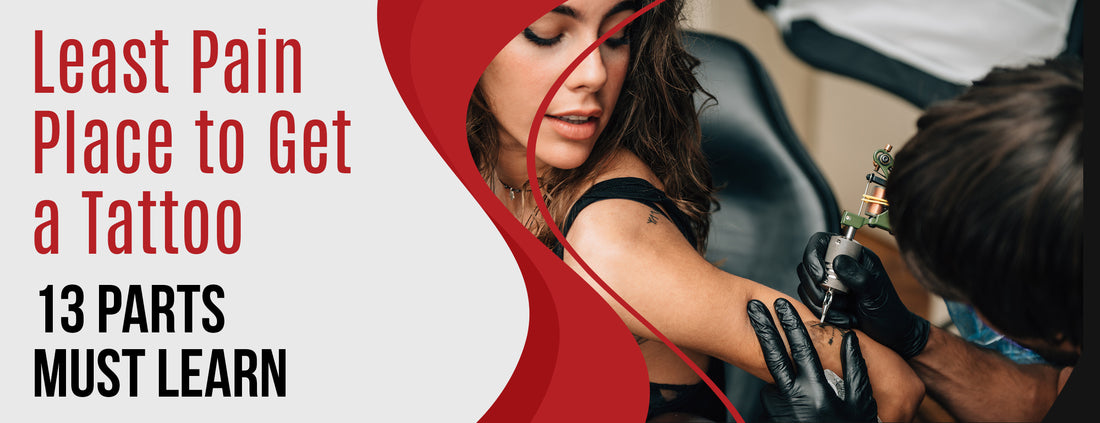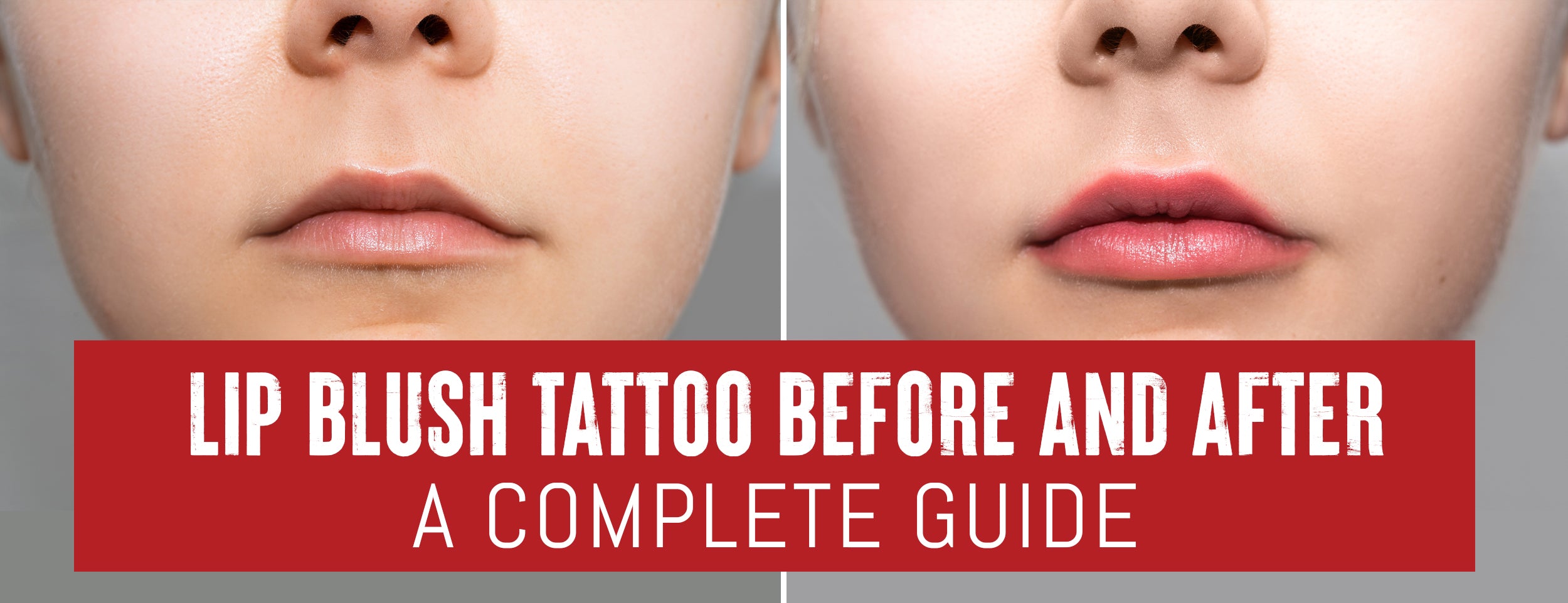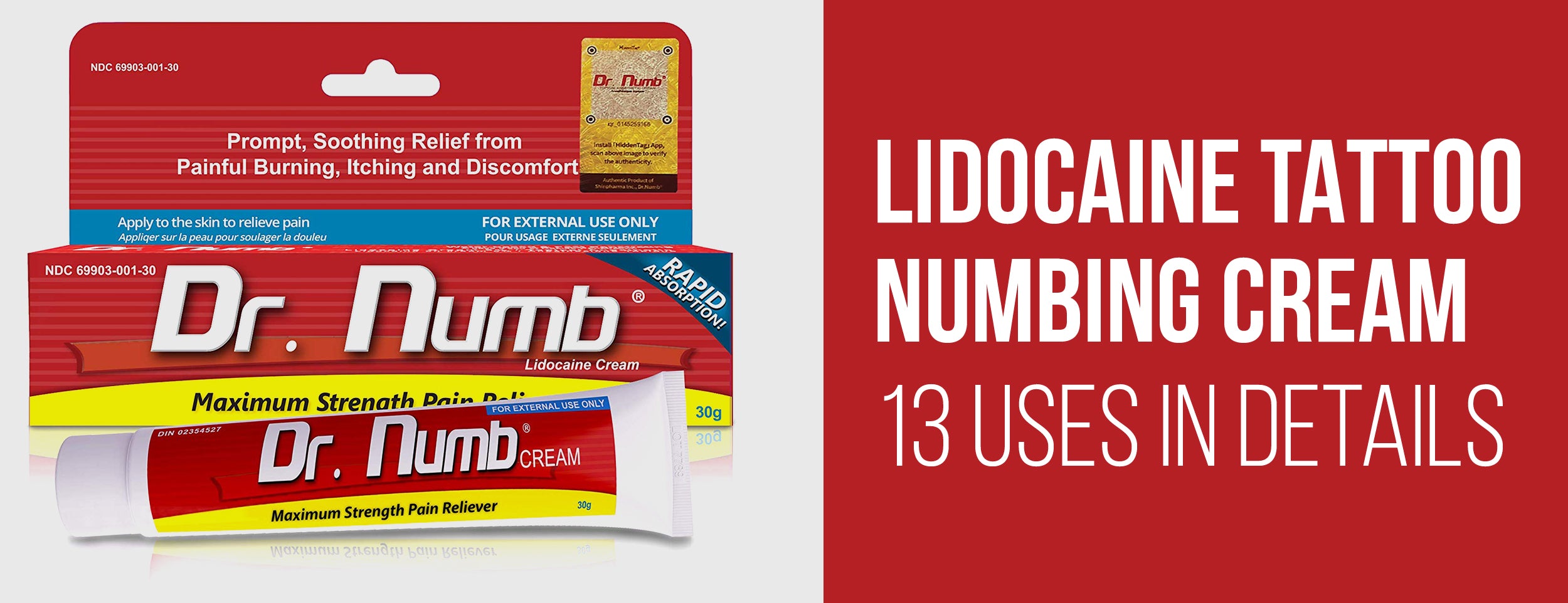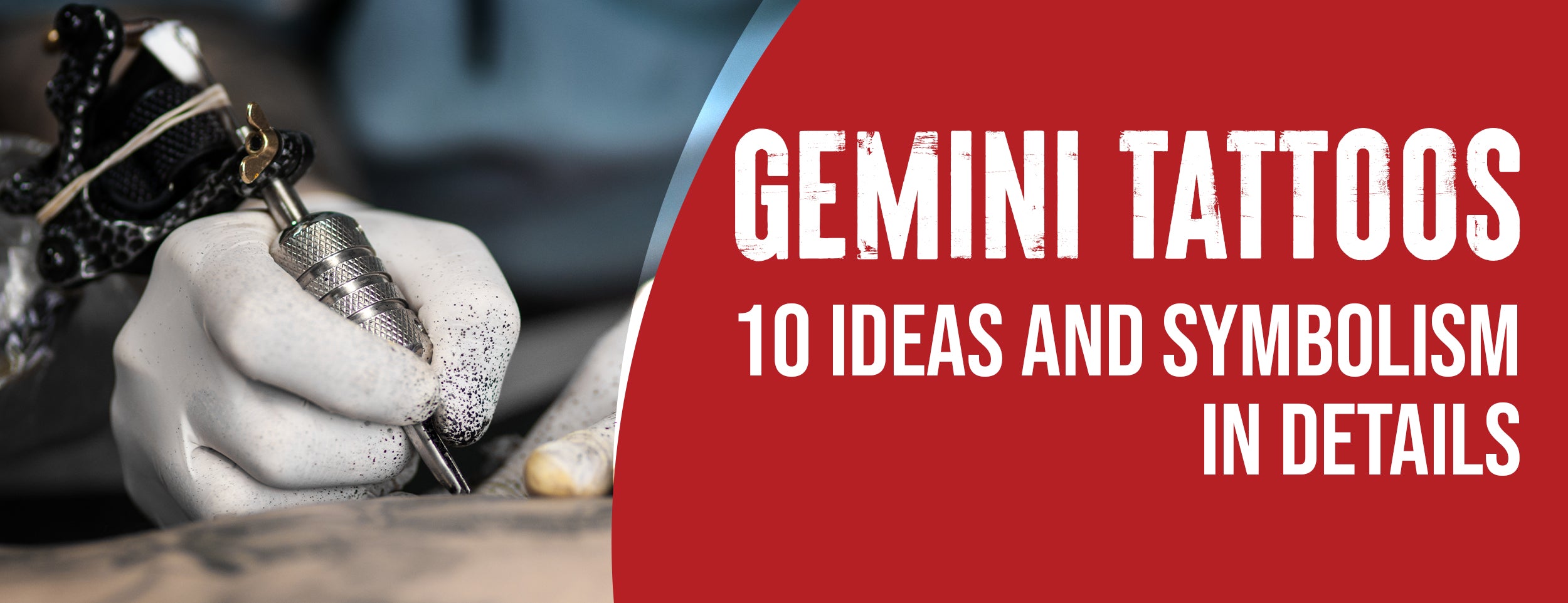Tattoos have become a popular way to express yourself, but the fear of pain can be discouraging. That's why knowing the most painless tattoo areas can help make the process easier.
The tattoo pain level varies depending on age, gender, and pain tolerance. Areas with more fatty tissue, fewer nerve endings, and thicker skin tend to be less painful. For example, getting a tattoo on your forearms, stomach, or outer thighs is less painful.
In this blog post, we will explore 13 body parts considered less painful for tattoos. We'll also provide some tips to help minimize the pain even further. Stay tuned!
Least Painful Areas To Get a Tattoo: 13 Parts

getting a tattoo can be exciting, fulfilling, and slightly painful. The pain level depends on size, design, location, and the artist's skill. Certain body parts are more sensitive and prone to swelling, bleeding, or infection. For a less painful experience, consider these 13 relatively easier tattoo locations.
Finger Tattoos
Finger tattoos are trendy, especially among celebrities and young people. They are small, discreet, and express your style. Finger tattoos are less painful due to the thin skin and fewer nerve endings on the fingers. However, they may fade, blur, and be hard to heal. Avoid tattoos on sensitive areas like finger sides or joints prone to rubbing.
Outer Shoulder Tattoos
The shoulder is a popular place for tattoos due to its large surface for designs. It is less painful than other areas, thanks to the thick layer of skin and muscle cushioning the needle. You can easily cover up or show off a tattoo on the outer shoulder based on your preference. Avoid front or back shoulder tattoos as they are closer to the bone and more painful.
Thigh Tattoos
The thigh is a popular and painless spot for tattoos. It has ample flesh and fat, providing a buffer for the needle. It's versatile, can accommodate designs of various sizes, and can be easily concealed. Avoid inner thigh tattoos due to increased sensitivity and potential bleeding.
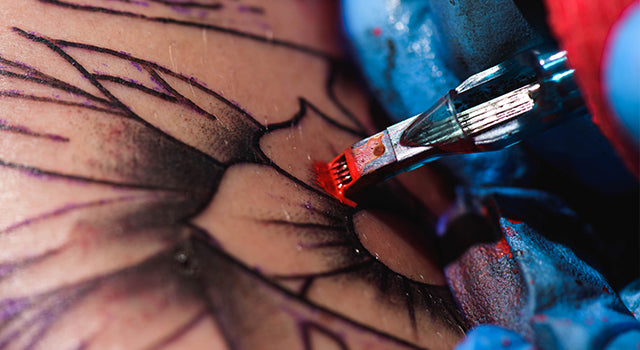
Inner Side of Wrist Tattoos
The inner wrist is a delicate area for meaningful tattoos. It's relatively painless, with a thin layer of skin and few nerve endings. But be cautious about size and placement, and avoid the outer wrist, which is painful because it is nearer to the bone. Consider mobility and visibility, too.
Upper Area of the Back Tattoos
Getting a tattoo on the upper back is ideal - it provides a smooth surface for intricate designs. It's less painful, thanks to the protective layer of skin and muscle. Healing and maintenance are easy, as it's sheltered from sunlight and friction. Avoid lower back tattoos, as this area is more sensitive to nerve endings.
Shin Tattoos
Shin tattoos are painless and versatile due to their flat and elongated surface. Although healing time may be longer and swelling more pronounced, thin skin and few nerve endings make it relatively painless. Avoid knee areas, front or back, as they are more painful and prone to bending.
Neck Tattoos
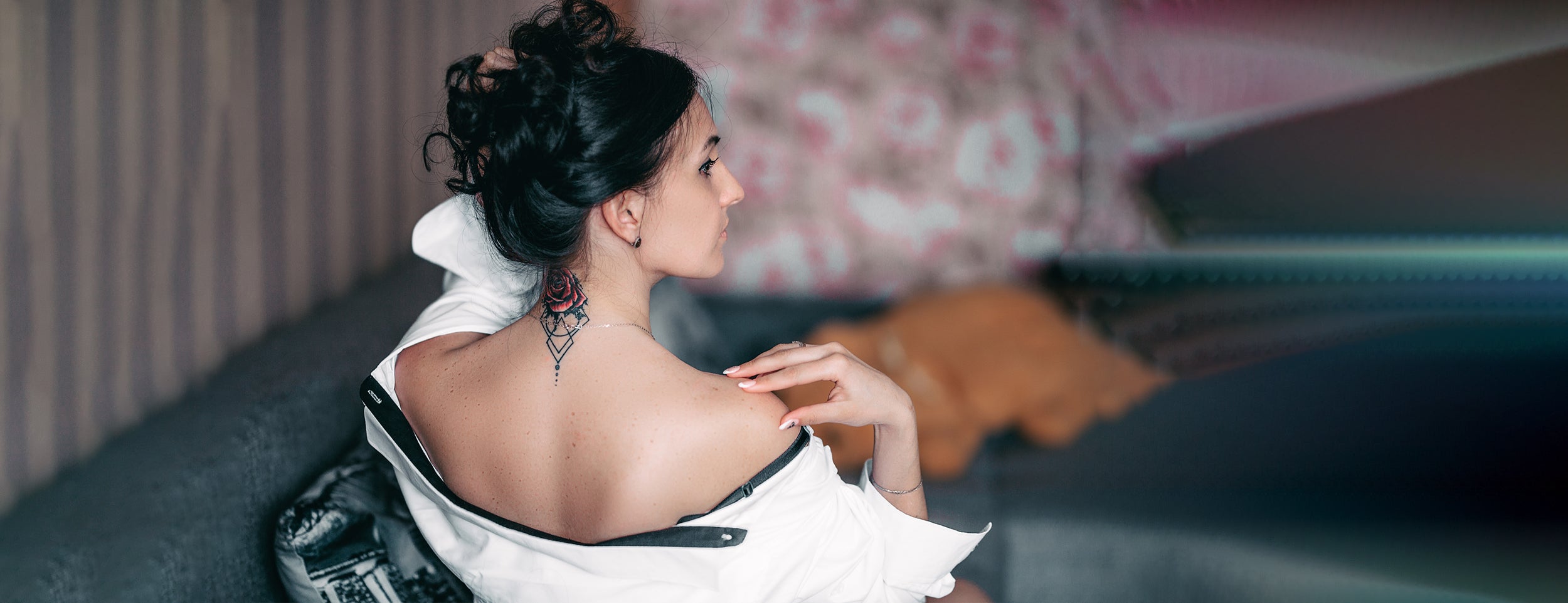
Getting a tattoo on your neck can be bold and attention-grabbing, highlighting your personality. Since there is a thin skin layer, it's easier to do, but be aware of the social and professional implications. Avoid front or back neck tattoos since they are less comfortable and closer to the spine.
Ear Cartilage Tattoos
Getting an ear cartilage tattoo adds flair to your piercings. It's a painless area with fewer nerves and blood vessels. Ensure proper hygiene and aftercare to prevent infection. Avoid tattooing the earlobe. It's more sensitive and painful.
Calves Tattoos
Calves are an ideal spot for tattoos - painless, muscular, and with ample cushioning. They're flexible for various designs, easily concealed, and can be flaunted, too. Calf tattoos may stretch or sag over time due to gravity and weight fluctuations. Avoid ankles and feet for tattoos; these areas are more painful and susceptible to swelling.
Upper Back Tattoos
The upper back is a great place for a tattoo. It has plenty of skin and muscle protecting the needle. It's spacious and can accommodate various designs, large or small. You can easily hide or show it. But be mindful of the placement and alignment. Seeing and fixing it alone may be challenging. Avoid getting a tattoo on the spine or ribs; those areas are more painful because the bones are closer to the skin.

Finger Nails Tattoos
Decorating your nails with tattoos can be a unique and painless way to add color and creativity to your manicure. Unlike other areas, fingernails lack nerve endings and blood vessels, making them painless canvases. Remember that these nail tattoos are temporary and will grow out with your nails. It's important to avoid tattooing the cuticles or the sensitive skin surrounding your nails, as these areas can be more sensitive and painful.
Upper Thighs Tattoos
The upper thighs are a great spot for tattoos. They have plenty of flesh and fat to provide cushion for the needle. You can choose from designs that can be easily concealed or shown off. Be mindful of the tattoo's shape and size, as it can be influenced by posture and movement. Avoid tattoos on the inner thighs or groin, as those areas are more sensitive and painful.
Stomach Tattoos
The stomach makes an excellent tattoo location. It's relatively painless, has few nerve endings, and can confidently show off your curves. There are some things you should consider. Stomach tattoos can be affected by weight changes, pregnancy, aging, and digestion. Avoid tattooing your belly button or navel, as these are sensitive and more painful sites.
Reduce The Pain When Getting Tattooed

Getting a tattoo isn't a walk in the park, but it doesn't have to be too painful. You can minimize the pain by taking some steps, such as.
18 Steps to Minimize Tattoo Pain
- Find a talented tattoo artist who works efficiently and safely.
- Opt for a small, uncomplicated design with minimal shading or coloring.
- Choose a body area with more skin and muscle, avoiding sensitive nerves and bones.
- Don't get tattooed on an empty stomach or when dehydrated or hungover.
- Fuel up with a balanced meal and hydrate well before your appointment.
- Skip caffeine, alcohol, aspirin, or other blood thinners that increase bleeding and inflammation.
- Take over-the-counter painkillers like paracetamol before your session.
- Numb the area with cream or spray at least an hour beforehand.
- Wear comfortable, loose clothing that allows easy access to the tattoo spot.
- Bring distractions like music, headphones, books, games, or a friend to divert your focus.
- Practice deep, calm breathing during the session.
- Relax your muscles and avoid unnecessary movement or tension.
- Take breaks if needed, and communicate any discomfort or desire to pause.
- Avoid looking at the needle or the sight of blood.
- Follow your tattoo artist's aftercare instructions diligently.
- Resist the urge to scratch, pick, or peel your tattoo as it heals.
- Shield your tattoo from direct sunlight and water for at least two weeks.
- Embrace your fresh new ink.

Pain Management
Even if you do everything mentioned above to reduce tattoo pain, you might still feel discomfort or soreness afterward. This is normal as your body heals from the needle trauma. You can ease the pain and aid the healing process by following these tips.
15 Tips for Managing Tattoo Pain
- Apply ice or a cold compress to the tattooed area to reduce swelling.
- Keep the tattooed area elevated to improve blood circulation and prevent fluid buildup.
- Take over-the-counter anti-inflammatory drugs like ibuprofen or naproxen to ease pain and reduce inflammation.
- Use numbing creams or gels to relieve pain and itching.
- Try natural remedies like aloe vera, coconut, lavender, or chamomile tea to soothe and moisturize your skin.
- Gently massage the tattooed area to promote blood flow and aid in healing.
- Drink plenty of water to stay hydrated and flush out toxins.
- Eat a healthy diet with protein, vitamins, minerals, and antioxidants to boost your immune system and aid in skin repair.
- Avoid smoking, drinking alcohol, or using drugs, as they can slow healing and increase the risk of infection.
- Wear loose and comfortable clothing to avoid rubbing or irritating your tattoo.
- Avoid excessive exercise or sweating, as it can cause bleeding or scabbing of the tattoo.
- Keep your tattoo dry and avoid soaking it in water to protect the ink and prevent infection.
- Keep your tattoo away from direct sunlight or tanning beds to preserve the color and prevent damage.
- Watch for signs of infection, such as redness, warmth, pus, fever, or foul odor.
- Consult a doctor if you experience severe pain, swelling, allergic reactions, or signs of infection.
Get Tattoos Removed Without Pain

If you regret a tattoo or want to change it, consider removal. It's more painful and costly than getting one initially. Laser treatment, common for removal, breaks down ink particles with intense light beams. Side effects include scarring, blistering, bleeding, infection, or hyperpigmentation.
Reduce pain and discomfort during tattoo removal with laser treatment using these tips.
Pain Management Methods for Laser Tattoo Removal
- Find a skilled and trustworthy laser technician who can perform the procedure safely and effectively.
- Select a suitable laser type that matches the color and depth of your ink.
- Prepare yourself mentally and emotionally for the procedure and its outcomes.
- Apply numbing cream or spray to the treatment area at least an hour before the procedure.
- Take over-the-counter pain relievers like paracetamol or acetaminophen before the procedure.
- During the procedure, use cooling devices like ice packs or cold air blowers to reduce heat and pain.
- Remember to breathe deeply and calmly throughout the procedure.
- Keep your muscles relaxed and avoid excessive movement during the procedure.
- Take breaks when necessary and communicate with your laser technician if you feel uncomfortable or need to pause.
- Follow the aftercare instructions provided by your laser technician diligently.
- Keep the treated area clean and dry using antibacterial soap and gauze.
- Apply antibiotic ointment or cream to the treated area to prevent infection and facilitate healing.
- Refrain from scratching, picking, or peeling the treated area while it heals.
- Avoid direct sunlight or water exposure to the treated area for at least two weeks.
- Repeat the procedure as needed until you achieve your desired results.
Conclusion:
Deciding whether to get a tattoo is a personal choice with lifelong consequences. If fear of pain is holding you back, knowing the least painful spots to get a tattoo can boost your confidence. You can get your desired tattoo with minimal discomfort by selecting from the 13 locations we've covered and following our pain management advice.
Remember, choosing a reputable tattoo artist and following their aftercare instructions is crucial to ensure proper healing. Taking the plunge and getting inked is something you should take your time, so feel free.

